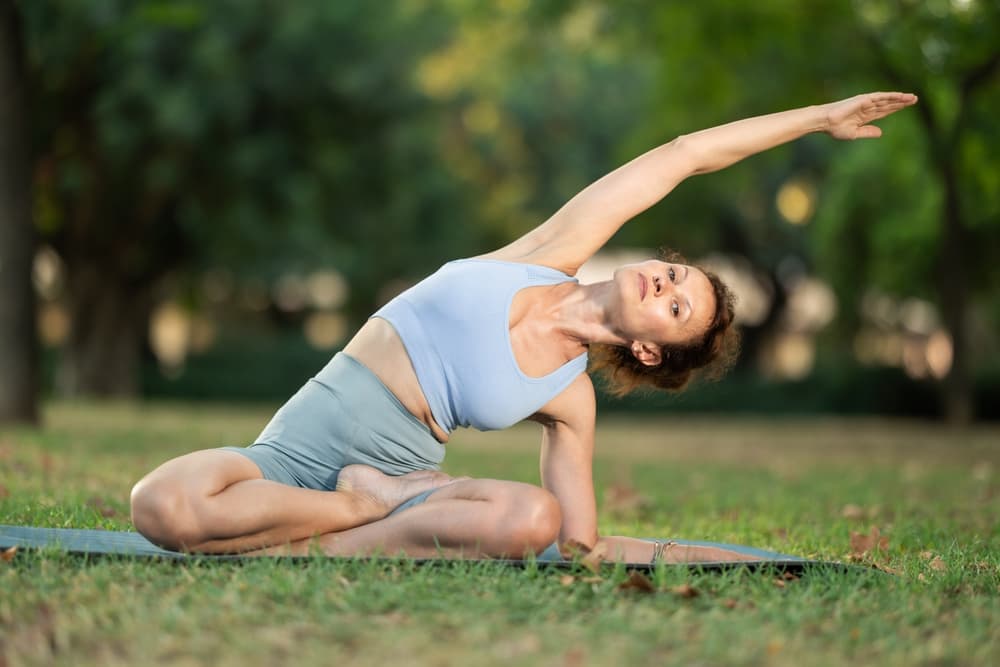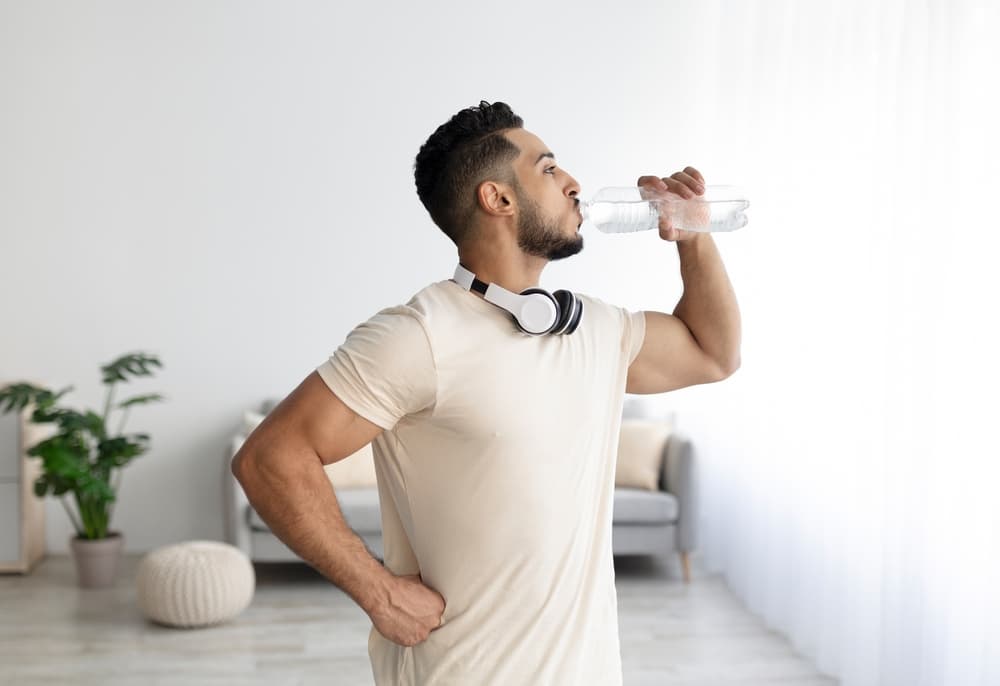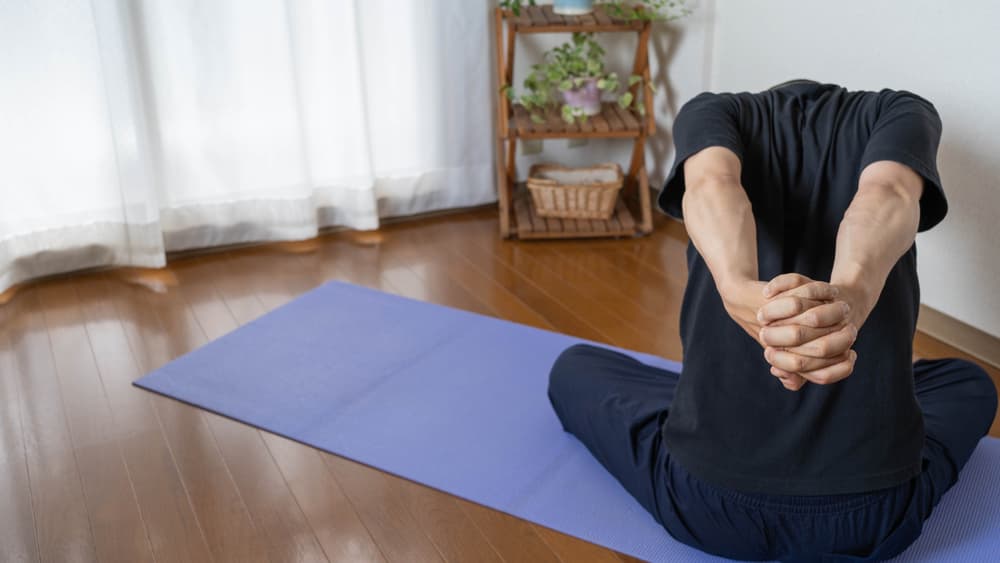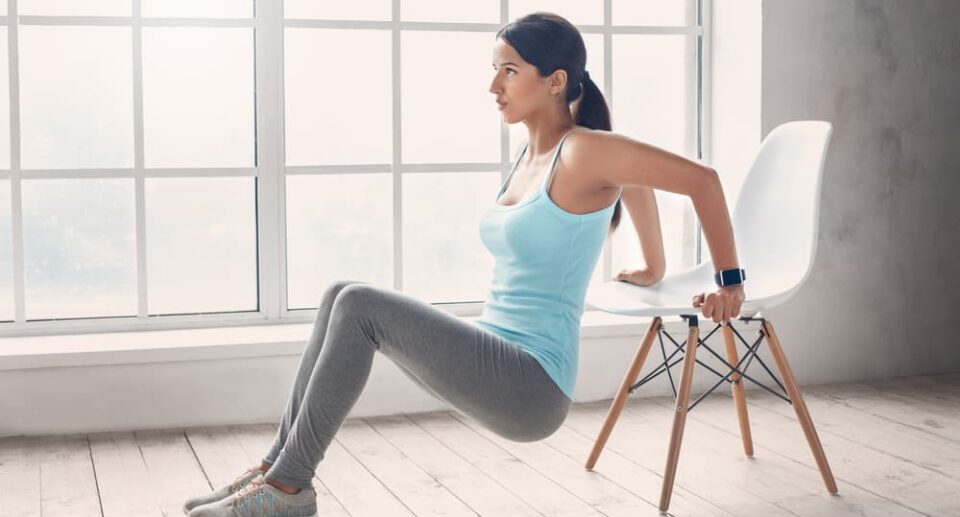The benefits of cycling for heart and lung health


How to Start Cycling for Your Heart and Lungs
One of the best and most popular cardiovascular exercises is cycling. It is an activity that doesn’t hurt your body and can help your heart and lungs. Cycling is good for your health in many ways, especially for your heart and blood vessels, whether you’re an experienced cyclist or just starting out. Pedaling in a rhythmic way makes your heart beat faster and your lungs work harder, which is great for your health in general.
Cycling not only makes you physically fit, but it also helps your mental health by lowering stress and anxiety. Cycling is a meditative activity because it is repetitive and takes place outside. It helps people focus on the present moment.


Cycling is good for your heart in these ways:
The heart is one of the most important organs, and keeping it healthy is important for a long life. Cycling regularly makes the heart stronger by making it better at pumping blood and moving oxygen around the body. Regular cycling can lower your risk of heart disease, high blood pressure, heart attack, and stroke. Aerobic exercises like cycling can lower blood pressure, lower bad cholesterol (LDL), and raise good cholesterol (HDL), according to research. This makes the structure of blood vessels healthier, which lowers the risk of atherosclerosis, which is when arteries narrow and is a major cause of heart disease.
Scientific Insights: The American Heart Association says that doing moderate-intensity aerobic activities like cycling for just 150 minutes a week can greatly lower your risk of heart disease. This is great news for people who want to improve their heart health but don’t want to go to the gym every day.
Cycling can also help you keep your weight in check, which is very important for lowering your risk of heart disease. People can lose weight, speed up their metabolism, and burn calories by riding their bikes often. This is good for the heart and blood vessels as a whole.


How cycling helps your lungs stay healthy
Cycling is good for your heart and also helps your lungs a lot. Cycling regularly makes your lungs bigger, which helps you breathe better and makes your respiratory system stronger. When you ride a bike, your lungs have to work harder to get oxygen to your muscles, which makes them work better overall.
Better oxygen supply and lung function:
Cycling is a good cardio workout that helps your lungs work better by making your breathing more efficient. It helps your lungs take in more oxygen and get rid of more carbon dioxide, which is important for keeping your energy up while you work out. Cycling regularly over time can help your lungs hold more air, which helps them exchange oxygen better, which is important for your health as a whole.
One of the best things about cycling for lung health is that it makes the muscles that help you breathe stronger. When you cycle all the time, the diaphragm and the muscles around the lungs get stronger, which makes breathing easier. This is especially good for people with asthma or other lung problems because it helps the lungs process oxygen better.
Increasing Cardiopulmonary Fitness:
Cycling helps your heart and lungs work better together to get oxygen to your body. This is called improving your cardiopulmonary fitness. This level of fitness is necessary for building up endurance and stamina. Cycling makes your heart beat faster and your breathing faster, which helps your body learn how to use oxygen more efficiently.
Cycling is an aerobic activity that makes your lungs work harder to get more oxygen, which helps strengthen the alveoli, which are the small air sacs in the lungs where gas exchange happens. This higher efficiency is good for the lungs in the long run because it makes them work better and lowers the risk of lung diseases.
According to the American Lung Association, aerobic exercises like cycling can greatly improve lung capacity and function. It also says that one of the best ways to keep from getting chronic obstructive pulmonary disease (COPD) and other lung problems is to exercise regularly.
Cycling outside, especially in areas that are clean and free of pollution, is even better for you because it lets your body breathe in fresh air that is full of oxygen. This helps the lungs work better, especially when compared to breathing in the dirty air that can be found in some indoor places.


Cycling and the Lowering of Respiratory Infections
Cycling is good for your immune system, which lowers your risk of getting a respiratory infection. Aerobic exercises like cycling on a regular basis improve the immune system by getting immune cells to move around the body more. These cells find and fight viruses and bacteria, including those that can make you sick in your lungs.
Improved Immune Function:
Cycling helps the body fight infections by increasing the number of white blood cells, which are very important for this. Cycling makes blood flow faster, which helps these immune cells move quickly around the body, even to the lungs and airways.
Research shows that moderate-intensity exercise, like biking, can help keep your immune system strong by lowering inflammation and making it easier for your body to find and fight off infections. On the other hand, too much high-intensity exercise may have the opposite effect and temporarily lower immune function, which makes it easier for infections to spread.
How to avoid getting upper respiratory infections:
Cycling at a moderate pace on a regular basis can also lower the risk of getting upper respiratory infections (URIs) like the flu or cold. The Journal of Sport and Health Science published a study that found that people who did moderate aerobic exercises, like cycling, were less likely to get respiratory infections than people who didn’t do anything.
Cycling regularly makes your body better able to fight off infections. This is very important in the winter when respiratory viruses are more common. Your lungs will hold more air, and you’ll get more oxygen, which will help your respiratory system heal faster if you do get an infection.
Dr. David C. Nieman, a professor at Appalachian State University and an expert in exercise immunology, says that moderate-intensity exercise like cycling can improve immune function and lower the risk of respiratory infections, especially for people who cycle regularly.
Also, riding your bike outside gives your body fresh air, which is good for your immune system and helps get rid of pollutants and allergens that could irritate your lungs. Getting fresh air on a regular basis may help lower the number of times you have seasonal allergies and other breathing problems.


Cycling to relieve stress and improve mental health
Cycling is good for your mental health as well as your physical health, especially when it comes to lowering stress and anxiety. Scientists have shown that regular exercise, like cycling, releases endorphins into the bloodstream. These are hormones that make you feel good. These hormones can help with mental health problems like stress, anxiety, and depression and make you feel better.
Lessening of Stress and Anxiety:
Cycling helps the mind relax. Cycling, especially outside, can be a meditative experience that lowers cortisol levels, the hormone that causes stress. The rhythmic motion and fresh air work together to do this. Studies have shown that aerobic exercise, like cycling, can make anxiety and stress symptoms a lot better. Also, the steady breathing that comes with cycling helps keep the nervous system in check, which helps you relax even more. When you cycle, you take deep, controlled breaths that help the parasympathetic nervous system, which is in charge of the “rest and digest” response. This helps to calm the body’s stress response.
Improved Mood and Mental Health:
Cycling, especially outside, lets you see natural settings, which has been linked to better mental health. Several studies have shown that being in nature can make you feel better, lift your spirits, and lessen the symptoms of depression. Riding your bike through parks, along trails, or by the beach can make you feel more connected to nature, which can be very good for your health.
Also, cycling regularly gives you a sense of accomplishment and self-control. Setting goals, like riding a bike a certain distance or going faster, gives you a sense of purpose and accomplishment, which boosts your self-esteem. Reaching these goals clears your mind and keeps bad thoughts at bay.
What Science Says:
The American Psychological Association (APA) says that exercise, like cycling, can be a powerful way to deal with mental health problems. The Harvard T.H. Chan School of Public Health did a study that found that exercise can lower the risk of depression by as much as 30%. People can become mentally stronger and learn how to deal with life’s problems by riding their bikes on a regular basis. Cycling is good for your mind as well as your body. It helps your mental health in both the short and long term. It’s a great way to relax, feel better, and get stronger mentally when you’re stressed.


Cycling and Keeping Your Weight in Check for Healthy Heart and Lungs
Cycling is an important part of keeping your weight in check, which is good for your heart and lungs. To lessen the stress on both the heart and lungs, it is important to keep a healthy weight. Too much body fat can cause a number of health problems, such as high blood pressure, high cholesterol, and poor lung function. Regular cycling helps people lose weight and keep it off, which is good for their health in the long run.
Burning Calories and Losing Fat:
One of the best things about cycling for weight loss is that it burns calories and helps you lose fat. Cycling can burn a lot of calories, but it depends on how hard and how long you ride. For example, cycling at a moderate pace can burn 400 to 600 calories in an hour. This makes cycling a very good way to work out your heart and lungs and help people lose weight by burning more calories than they eat.
Cycling also helps tone muscles and burn fat. The quadriceps, hamstrings, calves, and glutes are all working hard while you pedal. Over time, this extra muscle mass helps speed up the metabolism, which helps with losing fat and keeping weight off.
Effect on Heart Health:
Cycling helps keep your heart healthy by lowering your risk of heart disease, high blood pressure, and high cholesterol levels. Studies have shown that even losing a little weight by doing regular exercise like cycling can have a big impact on lowering cholesterol and blood pressure, which are two important factors in keeping heart disease at bay.
The Journal of the American College of Cardiology published a study that showed that people who exercised regularly, like by riding a bike, had lower blood pressure, better blood vessel function, and a lower risk of heart disease. When you add a healthy diet to these benefits, they get even better, making a strong combination for heart and lung health.
Scientific Insight:
The American Heart Association (AHA) says that riding a bike is a good way to lose weight and improve heart health. To keep your heart healthy and lower your risk of getting long-term diseases, the AHA says you should do at least 150 minutes of moderate-intensity aerobic activity, like cycling, every week.
Cycling is a fun and easy activity that people of all fitness levels can do. This makes it a great way to keep your weight under control over time. Keeping a healthy weight will greatly improve the function of your heart and lungs, whether you cycle for fun or as part of a structured fitness program.
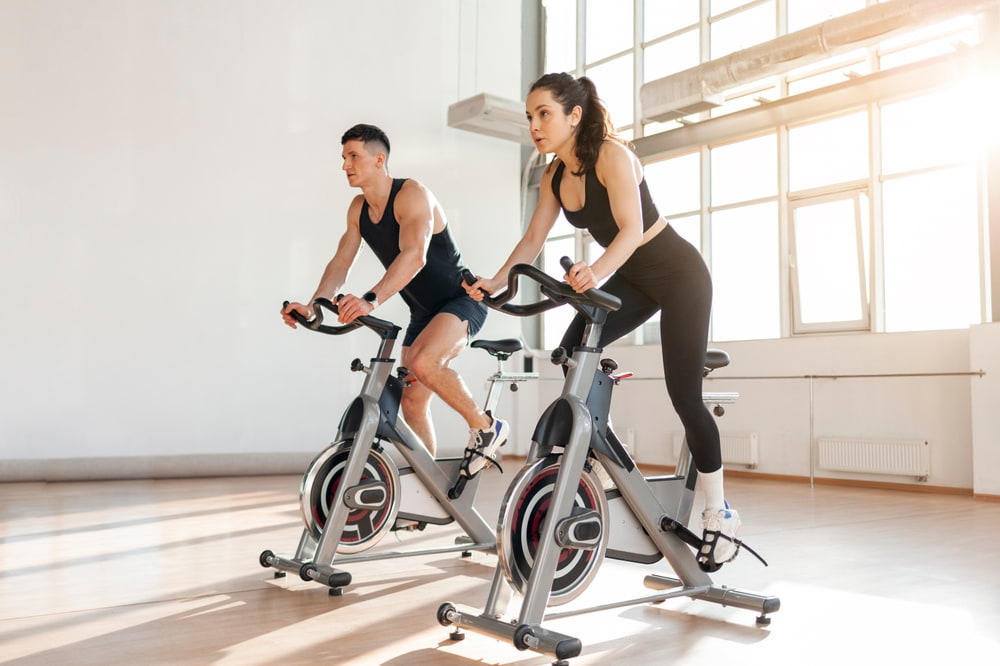

Cycling makes you stronger and more fit overall
Cycling is not only good for your heart and lungs, but it also helps you get in better shape and build up your endurance. Cycling is a good way to improve your cardiovascular health, stamina, and overall physical performance. Cycling for fitness, fun, or competition will help you build endurance in the long run.
Increasing Muscular and Stamina:
One of the best things about cycling is that it can help you build both your cardiovascular and muscular endurance. Your body gets used to the demands of riding, which makes it better at using oxygen and keeping your energy levels up. This will help you build up your overall stamina over time, so you’ll be able to ride longer distances and at higher intensities without getting tired.
Cycling mainly works the muscles in the lower body, like the quads, hamstrings, glutes, and calves. Cycling regularly makes these muscles stronger and less likely to get tired. More strength in your legs means you can do more things, like run, hike, or play sports, with better performance. It also means you can last longer in general.
Changes in the cardiovascular system:
Cycling on a regular basis helps your heart get stronger and your blood flow more smoothly. The heart pumps blood and sends oxygen around the body better when it can last longer. As you add cycling to your fitness routine, your heart rate will slowly drop when you are at rest, and your cardiovascular system will get better at handling exercise.
Cycling also helps your body use more oxygen during intense exercise, which is called VO2 max. This is a good sign of how fit and strong your heart and lungs are. A higher VO2 max means you can work out harder for longer before you get tired.
A scientific look at it:
The National Institutes of Health (NIH) has done research that shows that aerobic exercises like cycling greatly improve aerobic capacity and endurance. A study in the Journal of Strength and Conditioning Research found that people who added cycling to their workout routines saw big gains in their aerobic fitness and stamina over time.
Regular cycling makes you more fit, which is good for your health in general. People who have more endurance have more energy throughout the day. This makes them more productive and improves their quality of life.
Cycling is a great way to improve your physical fitness and build endurance, whether you do it for fun or as part of a strict training program. Anyone can do it, no matter how fit they are, and it can be tailored to fit each person’s goals.


Cycling helps keep your joints healthy and flexible
Cycling is also great for your joints and flexibility, which is another amazing benefit. Cycling is a low-impact activity that doesn’t put much stress on the joints, unlike running or jumping. This makes it a great choice for people with joint problems or those who want to stay flexible and mobile as they get older.
Low-Impact Exercise for Healthy Joints:
People say that cycling is a non-weight-bearing exercise because it doesn’t put as much stress and impact on the joints as running or other high-impact activities. This makes it a great way for people with joint pain, arthritis, or who are recovering from an injury to get some exercise. The bike supports your body while you ride, which helps ease the strain on your knees, hips, and lower back.
Cycling is a great way for people with osteoarthritis or rheumatoid arthritis to stay active without making their joint pain worse. Cycling helps keep the joints flexible and improves their range of motion by keeping them moving and encouraging the flow of synovial fluid, which is the fluid that lubricates the joints.
Better flexibility and movement:
Cycling involves doing the same motion over and over again, which helps key muscle groups become more flexible and mobile. Your legs move through a full range of motion as you pedal, which helps to stretch and strengthen muscles, tendons, and ligaments, especially in the lower body. This moving around can make you more flexible over time, especially in your hips, knees, and ankles.
The Journal of Rheumatology published a study that found that cycling can help people with joint problems become more flexible and feel less pain. Pedaling all the time can also help blood flow in the legs, which keeps muscles and joints healthy and well-nourished.
What scientists know:
The American College of Rheumatology has found that low-impact activities like cycling can help people with chronic joint pain a lot. Cycling regularly can help lower inflammation, make joints more flexible, and stop them from getting stiff. This makes it a great addition to a fitness routine that is good for your joints.
Cycling also helps keep your muscles from getting smaller, which can make your joints weaker and make you more likely to get hurt. Cycling strengthens the muscles around the joints, which makes them more stable and supportive. This lowers the risk of problems with the joints even more.


What cycling does to your health and life span in the long run
Cycling is a long-term commitment that pays off in the short term and for years to come. People who cycle regularly tend to live longer, have a better quality of life, and have a lower risk of getting chronic diseases. Cycling can be a long-lasting way to improve both your physical and mental health if you make it a part of your daily or weekly routine.
Encouraging a long life:
Studies have shown that cycling regularly can greatly increase life expectancy. The British Medical Journal did a study that found that adults who exercise regularly, like cycling, live longer and healthier lives. The study found that people who rode their bikes for at least 30 minutes a day had a lower risk of developing chronic diseases like heart disease, diabetes, and stroke, which are major causes of early death.
Cycling is good for your heart, your immune system, and your weight, all of which are important for your long-term health. Cycling lowers the risk of getting conditions that can shorten your life, like high blood pressure, obesity, and respiratory diseases, by making these things better.
Lower Risk of Long-Term Illnesses:
One of the best things about cycling regularly is that it can lower the risk of getting long-term health problems that often come with getting older. Cycling lowers cholesterol levels, raises blood pressure, and encourages healthy blood flow, all of which help keep your heart healthy. It also lowers the risk of type 2 diabetes by helping to control insulin sensitivity and weight.
Cycling also makes the lungs stronger, which helps the body fight off respiratory infections. It also helps stop cancer, especially lung and colon cancer, by getting people to be more active and lose extra body fat, which is often linked to a higher risk of cancer.
Scientific Knowledge:
The World Health Organization (WHO) says that adults should do at least 150 minutes of moderate-intensity aerobic activity, like cycling, every week to improve their health and live longer. A study that came out in The Lancet medical journal found that cycling as a way to get around every day lowers death rates and lengthens life.
Cycling is good for your body and your mind. It keeps the brain working well, lowers the risk of neurodegenerative diseases like Alzheimer’s, and boosts memory and focus. Researchers have found that aerobic exercises like cycling improve brain plasticity and cognitive function, which helps keep your mind sharp as you get older.

